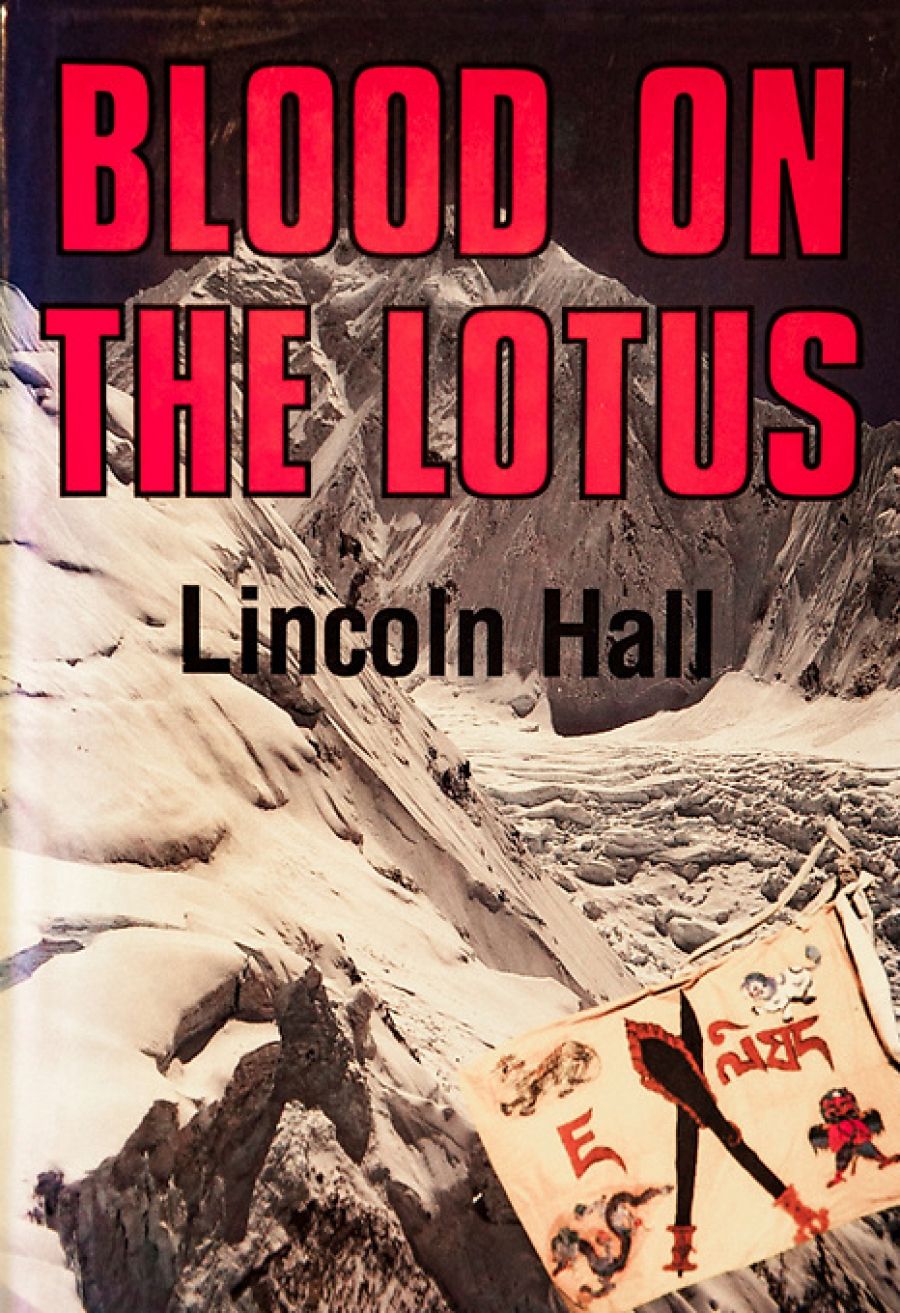
- Free Article: No
- Contents Category: Fiction
- Review Article: Yes
- Online Only: No
- Custom Highlight Text:
Set mostly in north-western Nepal during the early 1970s, Blood on the Lotus is a fictionalised account of the events leading up and consequent to the CIA’s withdrawal of support for the Kamphas, the Tibetan guerrilla army fighting the occupying Chinese.
- Book 1 Title: Blood on the Lotus
- Book 1 Biblio: Simon & Schuster, 315 pp, $29.95 hb
Although the dust jacket suggests that the book is a thriller, the plot is not complex enough to carry the weight of the implied label. The double-crosses and hidden motives are easily deduced and quickly revealed. When suspense does come it is because both the reader and the characters await some expected climactic event, not because we have been kept in the dark.
More important than the plot, however, are the characters. This is not Dickens or Proust but the characters are, for the most part, engaging and interesting. For the most part, they react to and are changed by the things that happen in ways that make them more than caricatured good guys and bad guys. The differences in outlook between Westerners and Easterners are also drawn and given life and purpose without falling into the platitudinous traps of juxtaposing Western materialism with Eastern spirituality or suggesting that ‘underneath the skin we’re all pretty much the same’.
The novel is not, however, without problems. In his introduction Hall points out that he has ‘condensed the events of several years into only a few months’. In doing so he has, towards the end of the book, tended to rush. After the careful, almost languid, build-up this dash for the finish makes for some jarring scene changes within chapters.
Another problem surfaces because of Hall’s awareness that he is writing for an audience unfamiliar with the setting of the story. He therefore, quite rightly, includes generous slabs of exposition. Unfortunately these expository slabs don’t segue into the narrative as smoothly as they should.
More serious is Hall’s portrait of Kay Randall. Her sexuality seems more what a man would presume her sexuality to be rather than anything actually felt by a woman. More cogently I question the wisdom of a male writer writing a rape scene (as Hall does at the book’s finish) in which he attempts to take the victim’s point of view.
All told, Blood on the Lotus is a decent first novel and a worthy example of the sort of book normally labelled a ‘good read’ which, if truly ‘good’, can be read on the train to and from work. In keeping with this requirement, none of the short chapters of this book is more than four stops long.


Comments powered by CComment